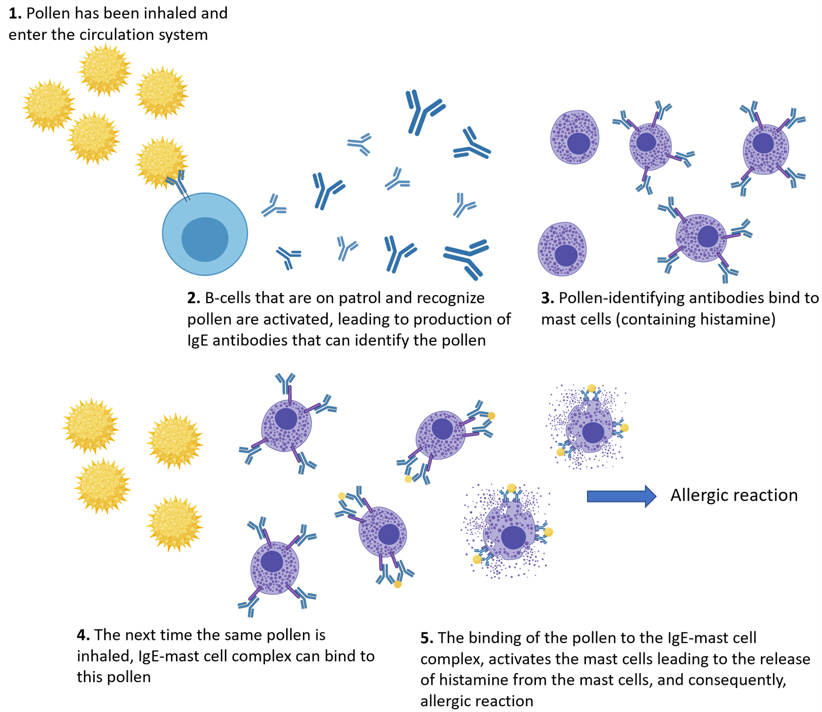Fall is here and with it come all-things-pumpkin, colorful, vibrant leaves, but also hay fever for some. Fall hay fever is usually caused by ragweed pollen. The symptoms can include tickling throat, runny nose, coughing & sneezing, dry eyes, and even headaches. So, what is actually going on inside the body during this time?
Generally, allergies happen when our immune system overreact when they see a typically harmless foreign substance, in this case, pollen. When our immune cells see pollen, one of the events that take place in our body is antibody production by B cells. There are five types of antibodies: IgG, IgM, IgA, IgE, and IgD, and IgE. IgE is the one that is responsible for allergic reactions. This pollen-specific IgE can bind to another immune cell, called mast cells which contain chemicals, including histamine. Upon another exposure to pollen, this IgE-mast cell complex will recognize the pollen, releasing the histamine contained in the mast cells. This histamine can bind to its receptors on different tissues, leading to the different allergic symptoms we are familiar with. This is why some allergy medication usually contains anti-histamine as they are able to block the action of histamine.
 Some aspects of the figure were made using biorender.com
Some aspects of the figure were made using biorender.com
Some people who are allergic to pollen may also be allergic to certain fruits, vegetables, and nuts. This cross-reactivity is known as Oral Allergy Syndrome (OAS). OAS happens when these seemingly unrelated objects actually have a portion of their protein that is similar to pollen protein. Consequently, this portion is recognized by the pollen IgE and leads to an allergic reaction. To avoid this, cooking the food may help as heat will change the protein structure and the IgE will not be able to recognize the food protein as pollen anymore.
There have been some suggestions to consume local honey to treat hay fever. The idea is to train our immune system to get used to seeing local pollens by consuming local honey, so it will not see local pollen as a danger signal. However, the pollen that bees collect is usually different from the allergy-causing pollen (from grasses and trees). So, consuming local honey may not provide our immune system with the training needed to recognize allergy-causing pollen. While over-the-counter or prescription medicine is always there, other things that can be done to minimize the chance of having an allergic reaction due to pollen is to wear a mask (we are still in the midst of a pandemic after all!), limit outdoor activities when pollen level is high, and have a thorough shower after outdoor activities.
Peer edited by Grace Stroman